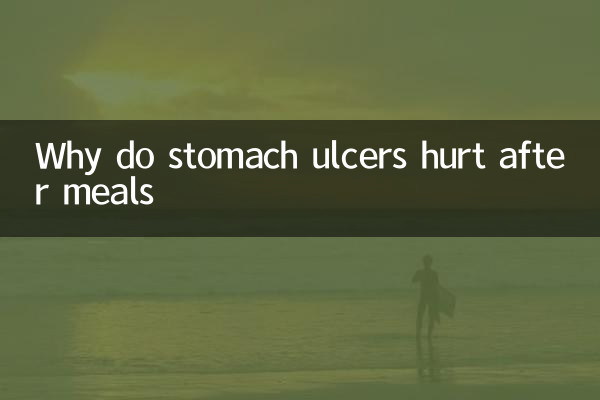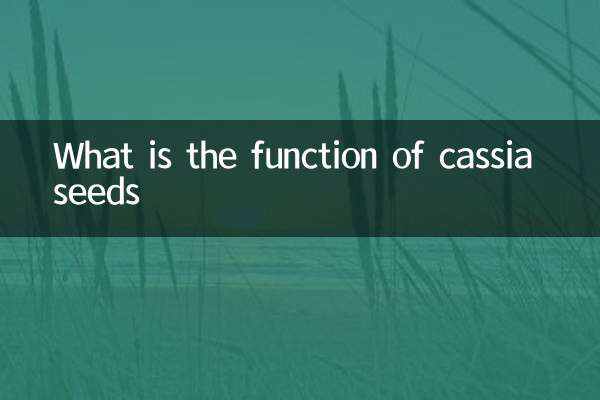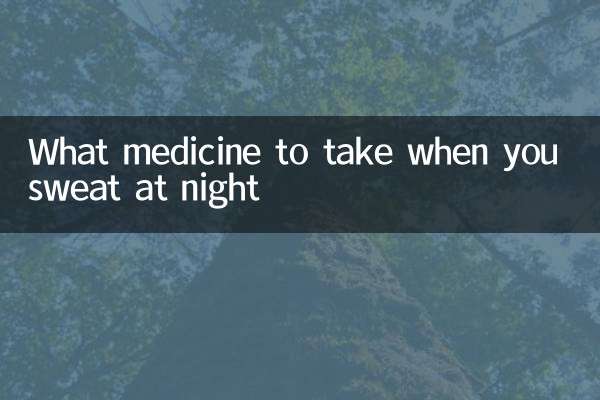Why do stomach ulcers hurt after meals
Gastric ulcer is a common digestive disorder, and one of its main symptoms is postprandial pain. This pain usually occurs within 30 minutes to 2 hours after eating, seriously affecting the patient's quality of life. This article will analyze the causes of postprandial pain of gastric ulcer from the aspects of the pathogenesis, symptoms, diagnosis methods and treatment suggestions of gastric ulcer in detail.
1. The pathogenesis of gastric ulcer

The occurrence of gastric ulcer is related to a variety of factors, mainly including excessive gastric acid secretion, impaired gastric mucosal barrier function, and Helicobacter pylori infection. The following is a brief summary of the pathogenesis of gastric ulcer:
| factor | Mechanism of action |
|---|---|
| Excessive secretion of gastric acid | Gastric acid directly corrodes the gastric mucosa, causing ulcers to form |
| Impaired gastric mucosal barrier function | Mucosal defense ability is reduced and cannot resist gastric acid erosion |
| Helicobacter pylori infection | Bacteria destroy gastric mucosa, causing inflammation and ulcers |
| Nonsteroidal anti-inflammatory drugs (NSAIDs) | Inhibit prostaglandin synthesis and weaken mucosal protection |
2. Why does gastric ulcer hurt after meals?
Postprandial pain is one of the typical symptoms of gastric ulcer, and its mechanism is mainly related to the following factors:
1.Increased gastric acid secretion: After eating, the amount of gastric acid secretion increases significantly, especially high-protein or high-fat foods will stimulate gastric acid secretion. Gastric acid directly acts on the ulcer surface, stimulating nerve endings and causing pain.
2.Food rubbing ulcer surface: After eating, food may rub against the ulcer surface during intragastric peristalsis, aggravate local damage and cause pain.
3.Changes in the stomach pressure: Increased pressure in the stomach after meals may cause mechanical irritation to the ulcer surface and cause pain.
4.Delayed gastric emptying: Some patients with gastric ulcers are accompanied by gastric emptying disorders, and the food stays in the stomach for a longer time, which continuously stimulates the ulcer surface.
3. Other symptoms of gastric ulcer
In addition to postprandial pain, gastric ulcers may also be accompanied by the following symptoms:
| symptom | Incidence rate | Features |
|---|---|---|
| Upper abdominal pain | 80%-90% | Mostly burning or dull pain, which worsens after meals |
| Acid reflux | 60%-70% | Reflux of stomach contents to the esophagus |
| Belching | 50%-60% | Frequent hiccups |
| Nausea and vomiting | 30%-40% | In severe cases, blood may be vomited |
| Loss of appetite | 40%-50% | Fear of eating due to pain |
4. Diagnosis of gastric ulcer
Confirming gastric ulcer requires combining clinical symptoms and auxiliary examinations. The following are commonly used diagnostic methods:
1.Gastroscopy: It is the gold standard for diagnosing gastric ulcers. It can directly observe the size, shape and location of the ulcer, and a biopsy can be performed.
2.Helicobacter pylori detection: Including urea breath test, fecal antigen detection and histological examination, etc.
3.X-ray barium meal examination: Suitable for patients who cannot tolerate gastroscopy, it can display ulcer niche shadows.
4.Laboratory inspection: Including routine blood, stool occult blood tests, etc., to evaluate the presence or absence of anemia and bleeding.
5. Suggestions for treating gastric ulcers
The treatment of gastric ulcer requires a multi-pronged approach, mainly including the following aspects:
| Treatment measures | Specific methods | Things to note |
|---|---|---|
| Drug treatment | Proton pump inhibitor, H2 receptor antagonist, gastric mucosal protective agent, antibiotics (Helicobacter pylori positive) | Take medication according to the doctor's instructions and complete the full treatment |
| Dietary adjustment | Eat less and eat more, avoid irritating foods, quit smoking and limit alcohol | Chew slowly to avoid overfilling |
| Lifestyle changes | Regular work and rest to reduce stress and avoid NSAIDs | Stay happy |
| Surgical treatment | Suitable for complications (perforation, bleeding, obstruction) or refractory ulcers | Strictly grasp the surgical indications |
6. Daily suggestions for preventing gastric ulcers
1. Maintain dietary rules and avoid overeating.
2. Reduce the intake of irritating foods such as spicy, greasy, and overacid.
3. Quit smoking and limit alcohol, and reduce irritation to the gastric mucosa.
4. Use NSAIDs drugs reasonably, and if necessary, combine with gastric mucosa protective agents under the guidance of a doctor.
5. Manage pressure and maintain a good attitude.
6. Regular physical examinations, especially those with a family history of stomach problems.
Conclusion
Postprandial pain in gastric ulcer is a complex pathophysiological process, which is mainly related to factors such as gastric acid secretion, food stimulation and changes in gastric motility. Through standardized treatment and lifestyle adjustments, most patients with gastric ulcers can obtain a good prognosis. If you often experience symptoms such as postprandial upper abdominal pain, it is recommended to seek medical treatment in time to avoid delaying diagnosis and treatment.

check the details

check the details